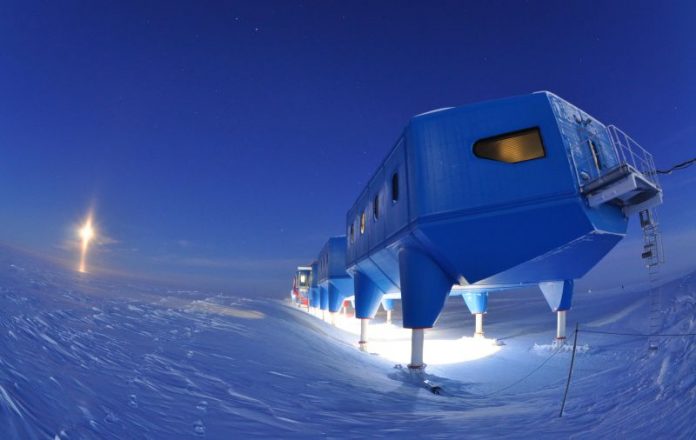The British Antarctic Survey has a problem in the form of an enormous crack in the East Antarctic ice sheet.
Dormant for about 35 years, The Crack began to grow in 2012. Today, it threatens to cleave off the entire ice shelf supporting the Halley VI research station. And so, Halley VI is being towed out of harm’s way.
The station sits on Antarctica’s 150 m thick Brunt Ice Shelf. This floating ice shelf flows at a rate of 0.4 km per year west towards the sea where, at irregular intervals, it calves off as icebergs. Halley is crucial to studies into globally important issues such as the impact of an extreme space weather event (which could cause an economic loss of $6 – 42 billion a day), climate change, and atmospheric phenomena. It was scientific investigations from this location that led to the discovery of the Antarctic Ozone Hole in 1985.
Long-term monitoring of the natural changes that occur in the ice shelf has revealed glaciological changes, including new growth of a chasm that has been dormant for around 35 years. Preparatory work for the re-location was carried out during the 2015-16 Antarctic Summer season (Nov-March). Now that the station has emerged from months of winter darkness, operational teams are ready to tow the station to its new home. This involves uncoupling the 8 station modules and using large tractors to transport each module further inland. Scientific research at Halley will continue in temporary facilities at the existing site and move to the new location next season.
Tim Stockings is Director of Operations at British Antarctic Survey. He says:
“Halley was designed and engineered specifically to be re-located in response to changes in the ice. Over the last couple of years our operational teams have been meticulous in developing very detailed plans for the move and we are excited by the challenge. Antarctica can be a very hostile environment. Each summer season is very short – about 9 weeks. And because the ice and the weather are unpredictable we have to be flexible in our approach. We are especially keen to minimise the disruption to the science programmes. We have planned the move in stages – the science infrastructure that captures environmental data will remain in place while the stations modules move. ”















